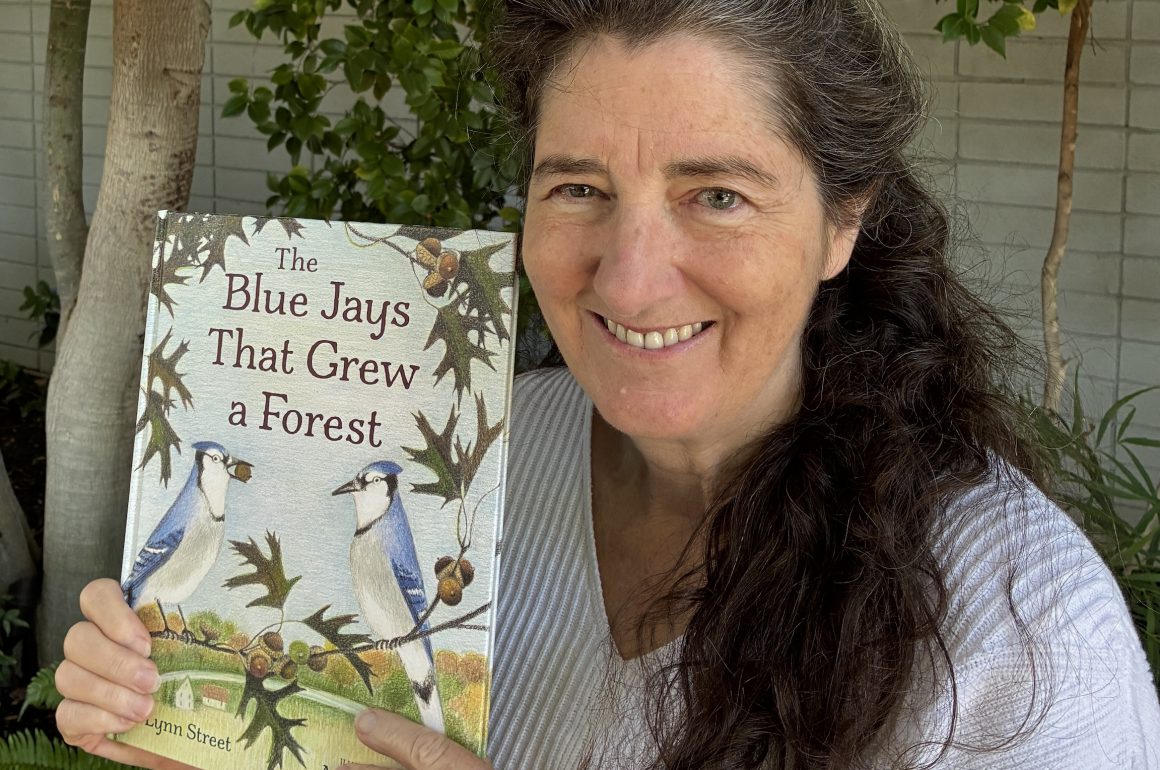
One of the glories of nonfiction picture books for adults is a moment of amazement and awe. I had known that Blue Jays hid acorns, but I hadn’t realized the degree of mutualism between Blue Jays and oaks—and I hadn’t know that Blue Jays had a throat pocket, an expandable gular pouch where they can store food. For me, it was the illustration of a Blue Jay with pouch loaded with acorns that was the “Wow!” moment in The Blue Jays that Grew a Forest, written by Lynn Street and illustrated by Anne Hunter.
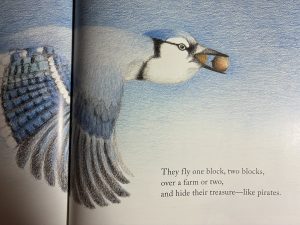
“As many as five per load, a few stowed in the throat pocket—which stretches like a sock—one in the mouth, another in the beak…”
For Lynn, the story inspiration came at an Audubon event where she spotted a photo of a Blue Jay carrying an acorn in its beak. She said “I sensed a mystery—and a story. That an oak can grow from a tiny acorn is amazing. That one bird caching acorns over a lifetime can impact the growth of forests is astounding!” As she notes, both blue jays and oaks are keystone species, critical to the survival of their ecosystems.
Nonfiction children’s books require absolute accuracy—at a PhD level!—wrapped in a story that will engage young kids and keep their attention. Lynn supplemented her research of academic paper papers with interviews with ornithologists and botanists, as well as the authors of the scientific papers. And she did hands-on research, spending months observing the blue jays in her yard and paying attention to their hiding places. She also participated in the Cornell Lab of Ornithology’s Project Feeder Watch and worked on a Master Birder certificate. She drafted the story as a free verse poem, and then worked to balance her lyrical language with the facts. I was delighted to discover a subtle and unexpected pirate theme running through the book.
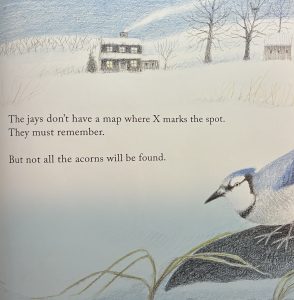
No map where X marks the spot: A blue jay remembering the hiding place of an acorn in winter, when the ground is buried in snow.
Illustrator Anne Hunter always loved to draw, and grew up studying art and scientific illustration. Her 2020 book WHERE’S BABY? was a Geisel Honor Award winner. These awards are given to the author and illustrator (Anne was both) of the most distinguished books that support beginning readers. Anne’s artwork for The Blue Jays that Grew a Forest has been selected by jury for the Society of Illustrator’s “The Original Art” annual show. This event showcases illustrations from the previous year’s best children’s books (for those age 0-12) published in the United States. For this book, she used pen and ink with colored pencil, with the blue of the sky often echoing the blue of the jays.
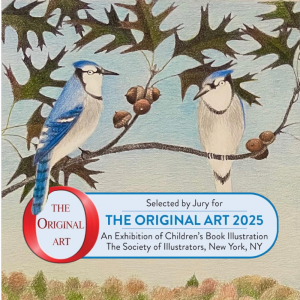
Illustration by Anne Hunter selected for the Society of Illustrators Original Art Show 2025
The story takes the reader through a year, beginning in summer with Blue Jays waiting for acorns to ripen. By autumn, the jays are prying acorns off the trees and urgency sets in as they haul away and bury their treasure. In winter, “when wintry winds whip through the hills and insects are scarce, they jays seek nuts and berries, and dine on their hidden gems. The jays don’t have a map where X marks the spot. They must remember. But not all the acorns will be found.” Spring brings the sprouting of those forgotten acorns, and the blue jays work to find insects for hungry chicks, while summer brings fledging and a new blue crew. A simple page of “Here. Here. There. There.” repeats in the book, with blue jays hiding acorns, acorns sprouting, and blue jays hiding the next year at the cycle repeats and the oak forest spreads.
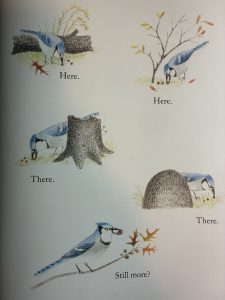
A refrain of “Here. Here. There. There” in THE BLUE JAYS THAT GREW A FOREST
One nearly hidden gem in the book is comparing the change in the forest over time. Before the book begins, there is a page with a map like a pirate treasure map: the old oak forest, a cabin and a town, the jay’s nest. Near the end of the book, a spread shows the same area, years later. There’s a new forest, as the outer edges have advanced and clearings have filled in.

A map, like a treasure map, before the blue jays grew a new forest.
Backmatter in The Blue Jays that Grew a Forest includes a section on the mutualism between Blue Jays and oak trees, information on tree planting, a glossary, further reading and selected bibliography. My favorite section of the backmatter were illustrations of various other types of jays and the oaks whose seeds they eat and disperse. In my home in Denver, Colorado, we are at the western edge of Blue Jay territory, with just occasional sightings, but nearly all trips into the nearby Rocky Mountains will net a sighting of a Stellar’s Jay, better known here as the “Camp Robber”.
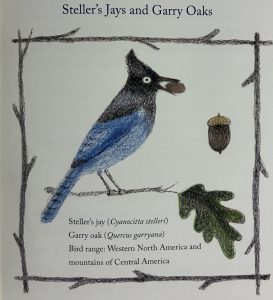
The Blue Jays that Grew a Forest, released last month (8/25), has already garnered acclaim. It is a Junior Library Guild Gold standard book, a merit-based award selected by a team of editors to provide librarians with the books most likely to become award-winners. Who is this book for? School and public libraries, of course. Teachers, as an intros to units for elementary and middle school life science classes studying life science and ecosystems. Pirate lovers. And of course, any birder with kids in their lives and blue jays out their windows.
The Blue Jay that Grew a Forest, written by Lynn Street, illustrated by Anne Hunter
Peachtree Publishing, 2025
ISBN: 978-1-68263-604-6
40 pages, ages 5-8
US $18.99; CAN $25.99








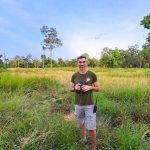

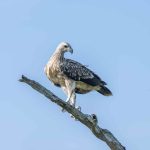
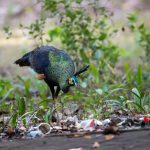

Sir David Attenborough once showed a sped-up version of the effects of jay planting, pretty cool